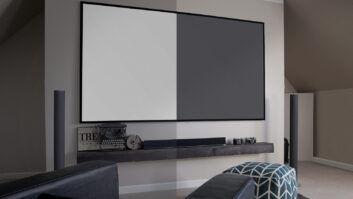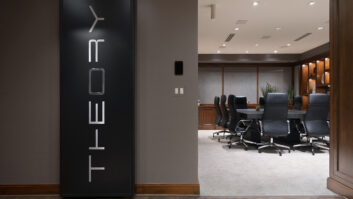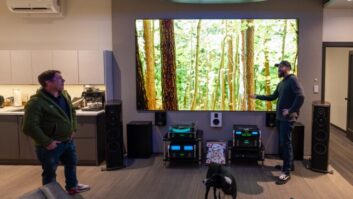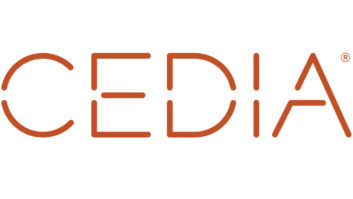Suppliers are turning in greater numbers to Ethernet and Internet Protocol (IP) technologies to distribute control signals around the house and in many cases to distribute audio and video around the house.
Here’s what select suppliers plan to show in Ethernet and IP technology:
Crestron: The company is stepping up its adoption of PC-network technology with the launch of its first Wi-Fi touch panel and two wired touch panels, all Isys-family models that stream Internet radio stations via Windows Media Player and view PC files in such applications as Acrobat and Excel.
With the touch panels, consumers can hear Internet radio stations on the touch panels’ speakers or direct the music to a distributed-audio system or home A/V system.
Other Isys touch panels browse the Web, but the new touch panels use different operating systems to provide the new features: Windows CE 4.2 on the Wi-Fi TPMC-10 with 10-inch color screen, and Windows XP on the wired TPMC-15 and TPMC-17 with standard 15-inch and widescreen 17-inch screens, respectively. Suggested prices are $3,800 for the wireless model and $12,000 and $13,500 for the wired models.
Elan: The company’s first Wi-Fi wireless touch panel will feature a 10.4-inch screen to control Elan home theater and distributed-A/V products. The touch panel runs on the Windows CE OS and browses the Web. The company will solicit dealer feedback at the show and won’t ship a final version until sometime in 2005.
iCommand: The B&W Group’s i-Command brand will demonstrate a system that integrates the control of multiple home subsystems, including an i-Command distributed-audio system, over its own Ethernet network or an Ethernet network that it shares with PCs.
Speaker-level audio signal is distributed via speaker cable.
Shipments are scheduled to begin around show time, having been delayed from an original March 2004 launch date.
The company’s i-Command Integrated Control System uses an Ethernet network to centrally control multiple home subsystems, including lighting and motorized drapes, from i-Command’s wireless $3,000-suggested tablet PC; $600-suggested Ethernet-connected i-Command in-wall keypads; or from any other browser-based device, including PCs. The tablet PC incorporates wireless 802.11b.
The subsystems, including A/V components, plug into the Ethernet network through outboard black boxes about the size of a deck of cards. One type of black box, the $300-suggested i-Node, connects to the RS-232 ports of A/V system components or other home-system components. Components that lack RS-232 ports can be connected to the network via a $600 ir-Node black box, which emits IR commands to devices such as VCRs.
In the main A/V system, the nodes can be plugged into the $1,000 Hub, which delivers Ethernet connectivity for all system components and provides operating power for the Ethernet-connected in-wall keypads and nodes. The Hub connects to the network via an in-wall Ethernet port.
Source components in other rooms can be connected to an Ethernet wall jack directly via an i-Node or ir-Node.
The $2,000 Powered Audio Matrix is a four-zone, 8×40-watt audio-distribution amp/preamp/controller. It taps into the Ethernet network via the Hub so it can be controlled by the Ethernet-connected in-wall keypads.
Imerge: Like previous models, the Mk2 versions of the company’s S2000 series of hard-disk music server will connect to an Ethernet network to distribute music to tabletop clients called Network Audio Players, which access music stored on a compatible SoundServer and incorporate AM/FM radio, amplification and speakers. They also tune into Internet radio stations.
The S2000 Mk2 also integrates with third-part distributed-A/V systems.
Details were unavailable.
Meda Systems: The Oakland, Calif., start-up has begun shipping a series of Bravo HDD music servers that incorporate a CD ripper; multisource multizone audio switching; and preamplifier to distribute audio from an internal multizone HDD and from connected sources, including Ethernet-connected PCs.
Via their built-in Web server or via supplied control software, the servers can be controlled from networked PCs and — if off-the-shelf wireless access points are added to the system — from 802.11b/g-equipped Pocket PCs and Web pads. The servers can also be controlled from other suppliers’ IR-based, RS-232 and IP-based in-wall keypads and touch screens.
The servers distribute music in speaker-level analog or digital S/PDIF form to multiple rooms. Via optional upgrades, the servers will also send digital audio over an Ethernet network to Ethernet-connected eZone tabletop clients, which decode the WAV, lossless FLAC, MP3, unprotected WMA and OGG codecs. The encoded music resides on a Bravo HDD server or on a networked PC.
The clients feature analog RCA outputs that must be connected to amplifiers and speakers in each room.
Four standard servers, equipped with built-in Internet-radio tuner, are priced from a suggested $3,295 to $6,795. The top-end Bravo 12 features 250GB drive, 15-zone capability (12 analog, three S/PDIF) and ability to play 12 sources simultaneously. It accepts an upgrade to distribute four more zones of music via an Ethernet network.
As an example of system pricing, the company cited a Bravo 4 server with five outputs (four analog and one digital) and 250GB HDD retailing for a suggested $4,595. The price goes to $8,000 after an installer adds a multizone amp, speakers for each zone, and two or three PocketPCs for wireless touch screen control (excluding integration with other suppliers’ IR-driven keypad systems.)
NetStreams: The Austin, Texas, company’s long-awaited DigiLinX system recently began shipping and will be on display. DigiLinX sends audio signals and control signals over an Ethernet network to deliver digital audio without the losses or distortion cased by long audio-signal runs.
An AudioLinX component at the main A/V system routes audio from multiple connected music components over an Ethernet network, controls connected audio sources via an IR database, powers Ethernet-connected in-wall keypads, and accepts a planned optional XM Satellite Radio tuner card. The component converts analog or PCM audio from connected source components in real time into TCP/IP streams, which are delivered to Ethernet-connected SpeakerLinX decoder/amplifiers in multiple rooms.
The SpeakerLinX modules feature 2×20-watt Class D amplifier, but they don’t get low-voltage operating power through Ethernet cable. Operating power is supplied via separate cable running from a PowerLinX 28-volt power supply at the main A/V system.
The modules decode MP3, WMA and WAV music files streamed through the AudioLinX from source components. The modules can be mounted behind walls near in-wall speakers.
The system is controlled from multiple in-wall TouchLinX color LCD touch screens.
Each component contains a Web server to enable control by Ethernet-connected PCs and by wireless-Ethernet-connected Web pads and PDAs.
Per zone, prices would range from $1,000 to $1,200, including amplifier and keypad but excluding speakers and the central AudioLinX component.
Polk/NetStreams: The speaker company teamed with NetStreams to develop IP-addressable active in-wall speakers that decode and amplify encoded audio signals distributed over an Ethernet network via NetStream’s DigiLinX system (above).
Four LCi-p, due in the spring, feature built-in digital decoder, digital amp and active crossovers, which allow for bi-amplification and triamplification. Suggested retails on the four rectangualar in-walls range from $2,500 to $4,500 per pair. They’re based on Polk’s LSi series of in-wall and in-ceiling speakers.
Sonos: The Santa Barbara, Calif., startup plans to demonstrate a wireless multizone audio system that uses a wireless handheld controller to distribute music to up to 32 independent zones from a PC-based music collection. The system also streams Internet radio stations.
Viewsonic: The company is expected to announce a product that distributes audio and video wirelessly.













